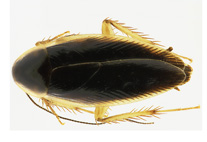Abstract
The recent brachiopod genus Amphithyris Thomson belongs to the family Platidiidae and to date comprises five species, A. seminula (Philippi, 1836), A. buckmani Thomson, 1918, A. hallettensis Foster, 1974, A. richardsonae Campbell & Fleming, 1981 and A. parva MacKinnon, Hiller, Long & Marshall, 2008. Like other platidiid genera, Amphithyris has a worldwide distribution, but is mainly found in the southern hemisphere, with the exception of A. seminula which occurs in the Mediterranean Sea. This study is the first revision of the genus Amphithyris. We describe two new species, A. cavernicola n. sp. from the Queensland Plateau, Coral Sea, Australia and A. comitodentis n. sp. from deep waters east of the South Island, New Zealand. A. cavernicola n. sp. represents the first record of the genus from Australian waters, whereas A. comitodentis n. sp. is the first species in the genus recorded from the deep sea. Additionally, we identified the type material of A. seminula in the brachiopod collection of the Museum für Naturkunde, Berlin and designated a lectotype for this species. Despite their simple shell morphology and few diagnostic features, we were able to clearly discriminate the (now) seven species by morphological (shell) characters such as absence/presence of a median septum, absence/presence of capillae, shell convexity and/or combinations of these. On the basis of all known records, the present distribution of Amphithyris spp. and a Cretaceous origin of the genus is discussed.

